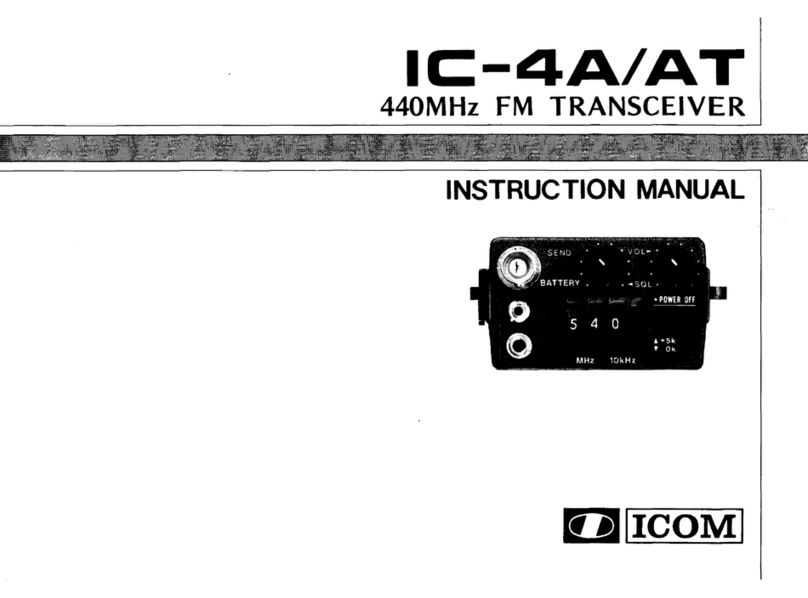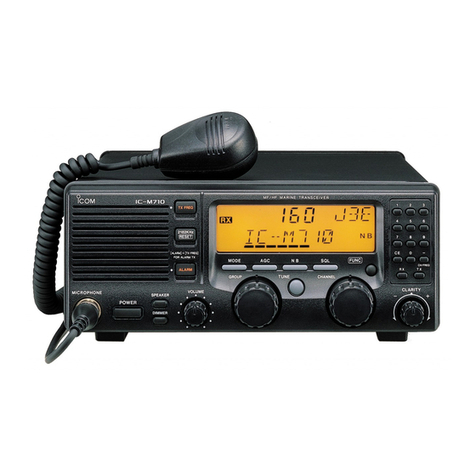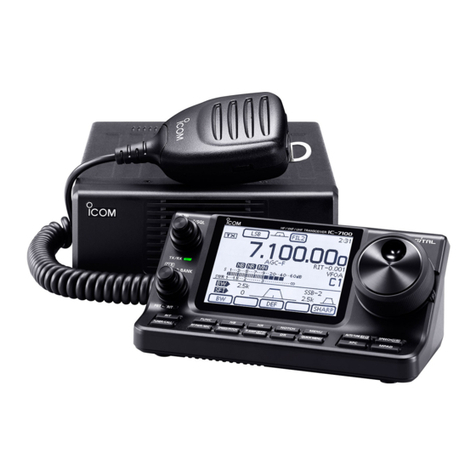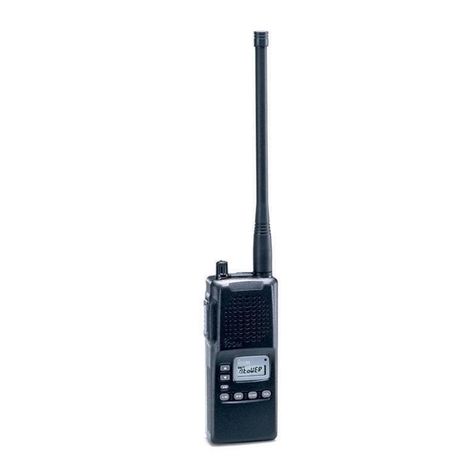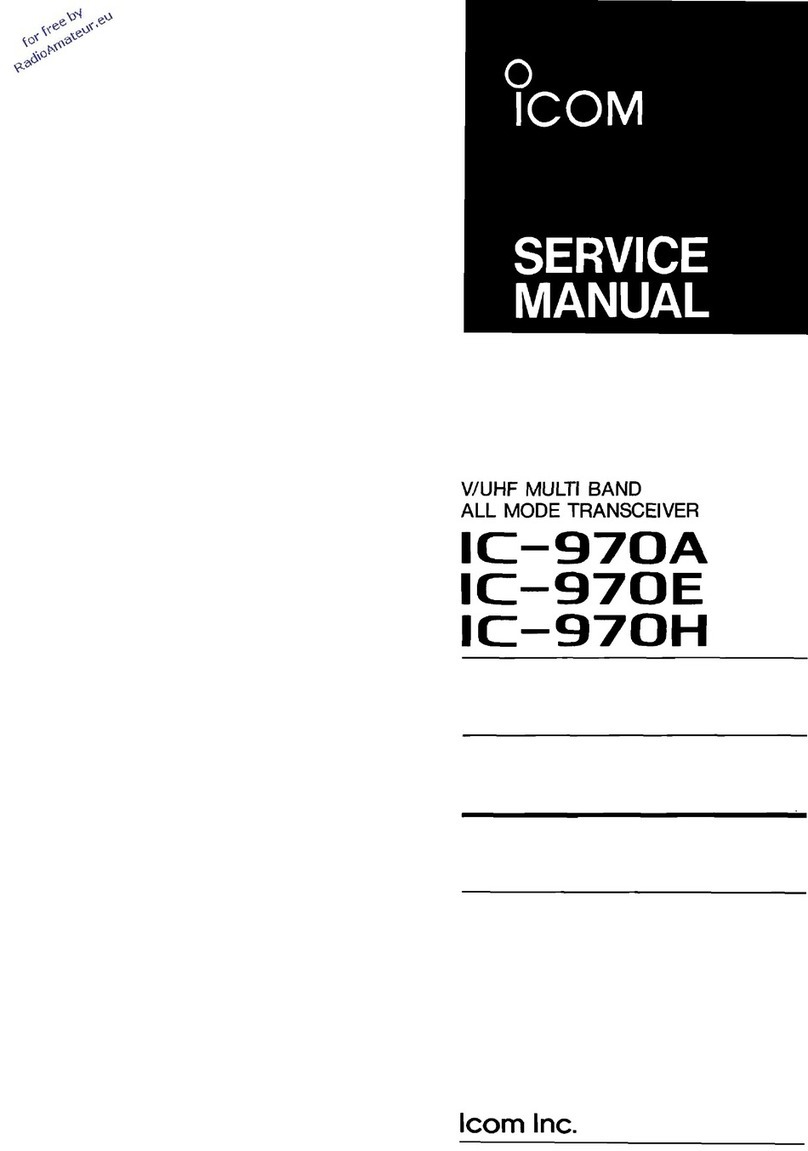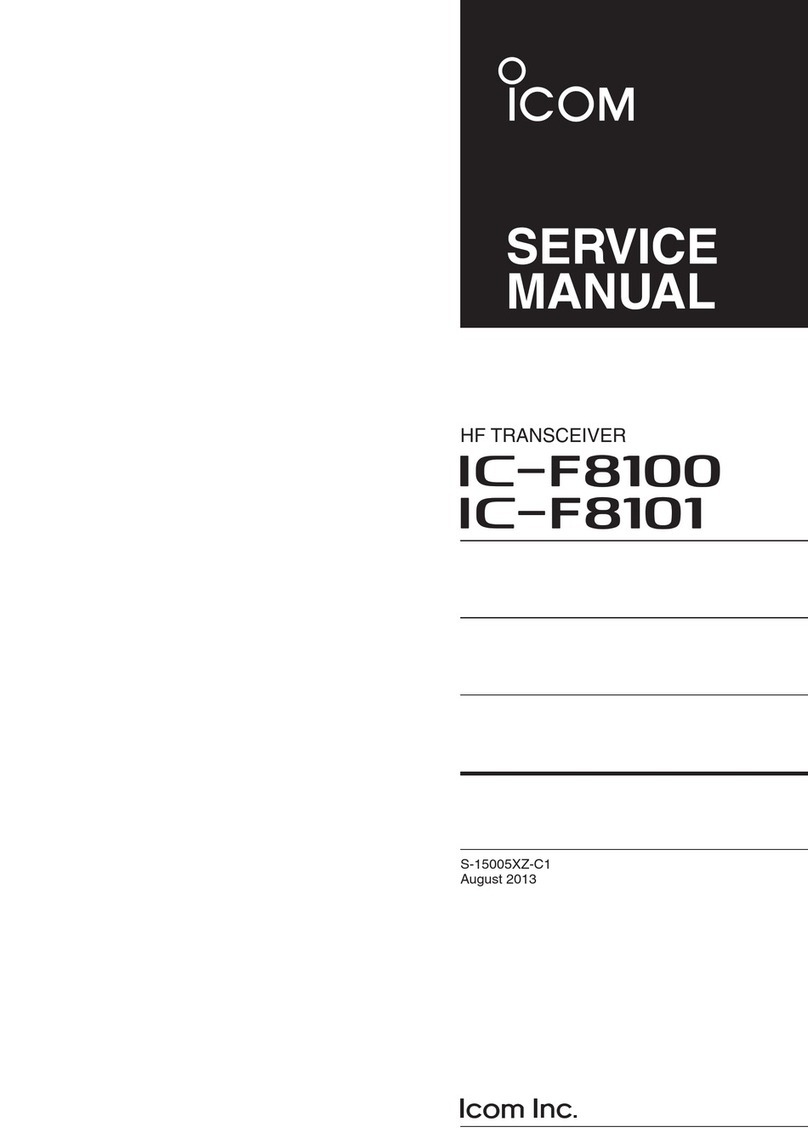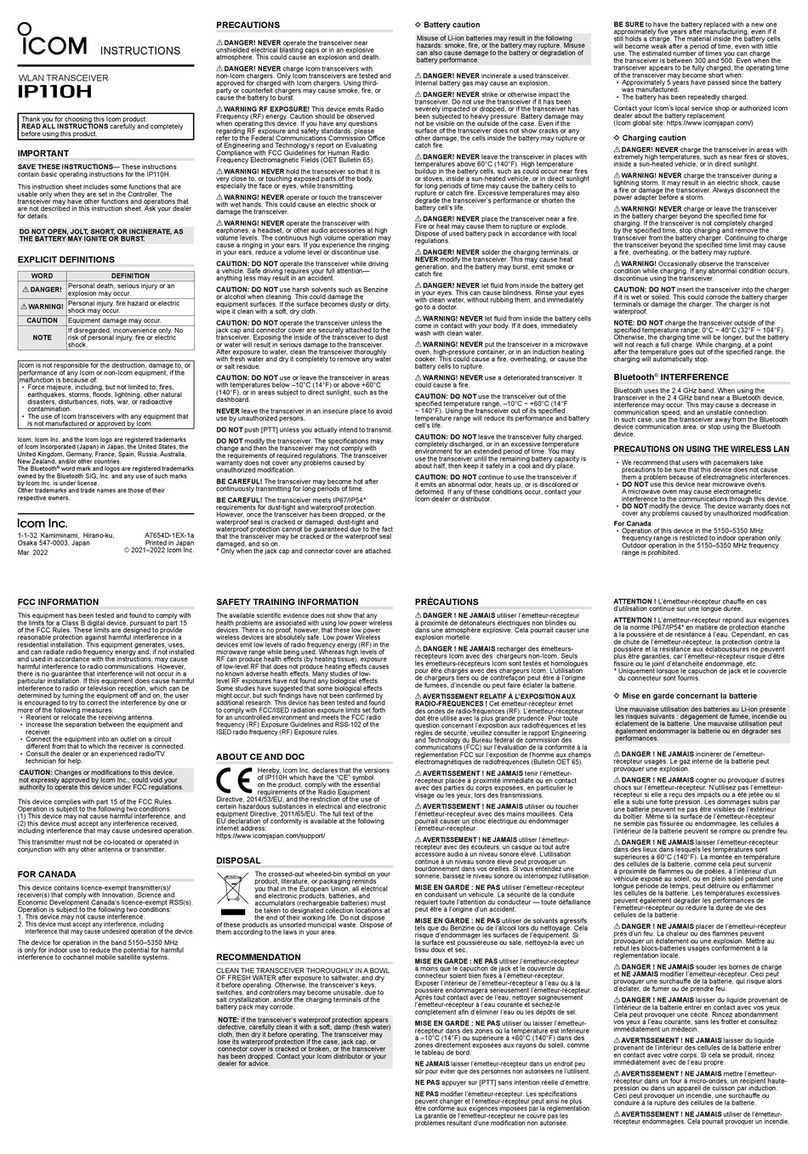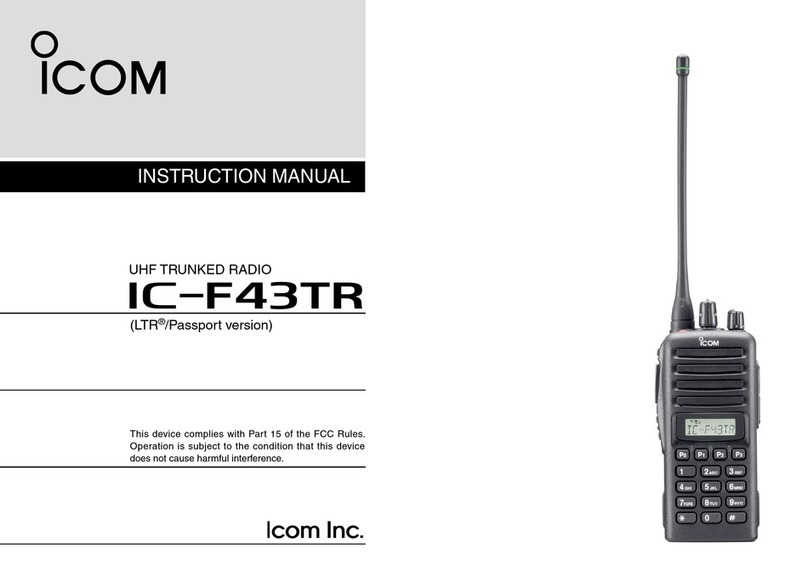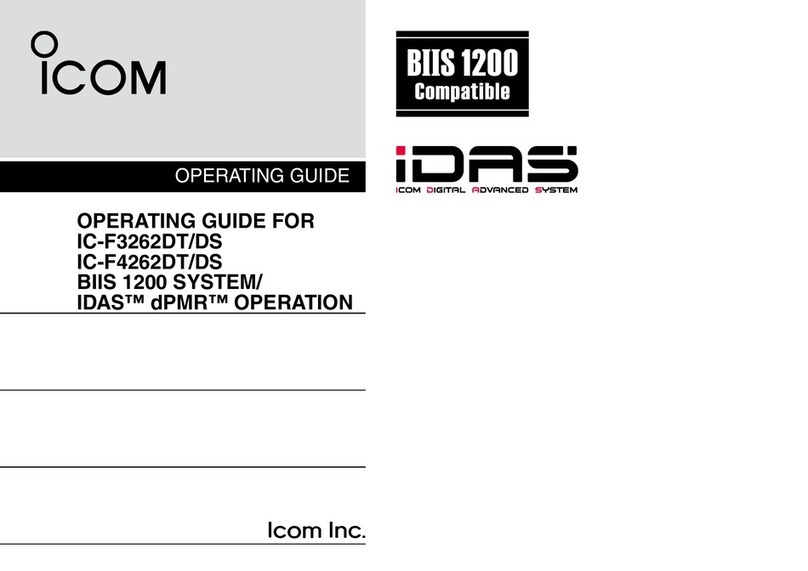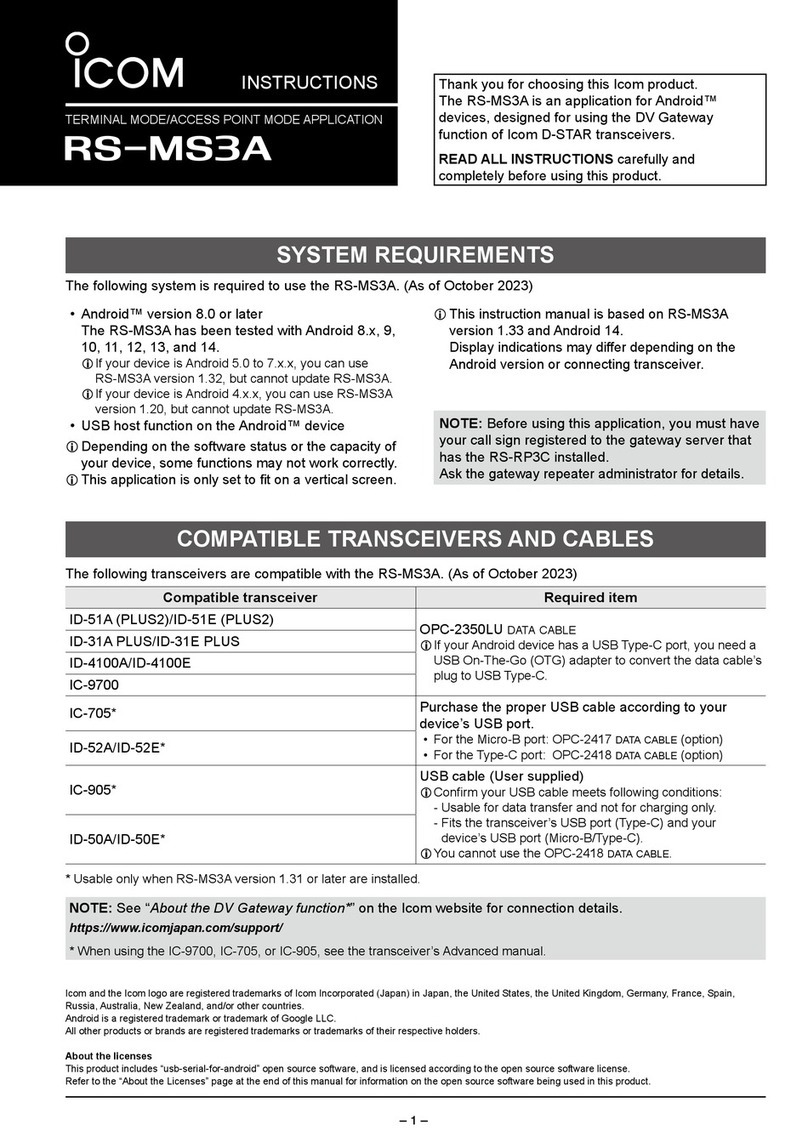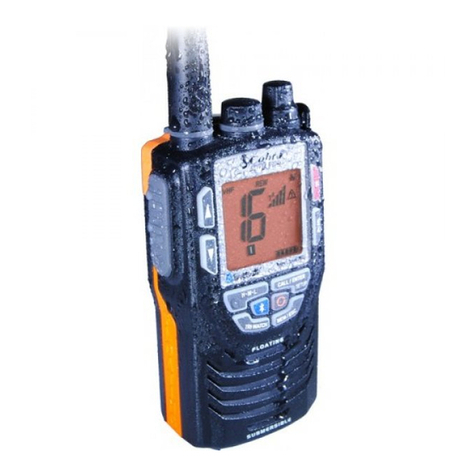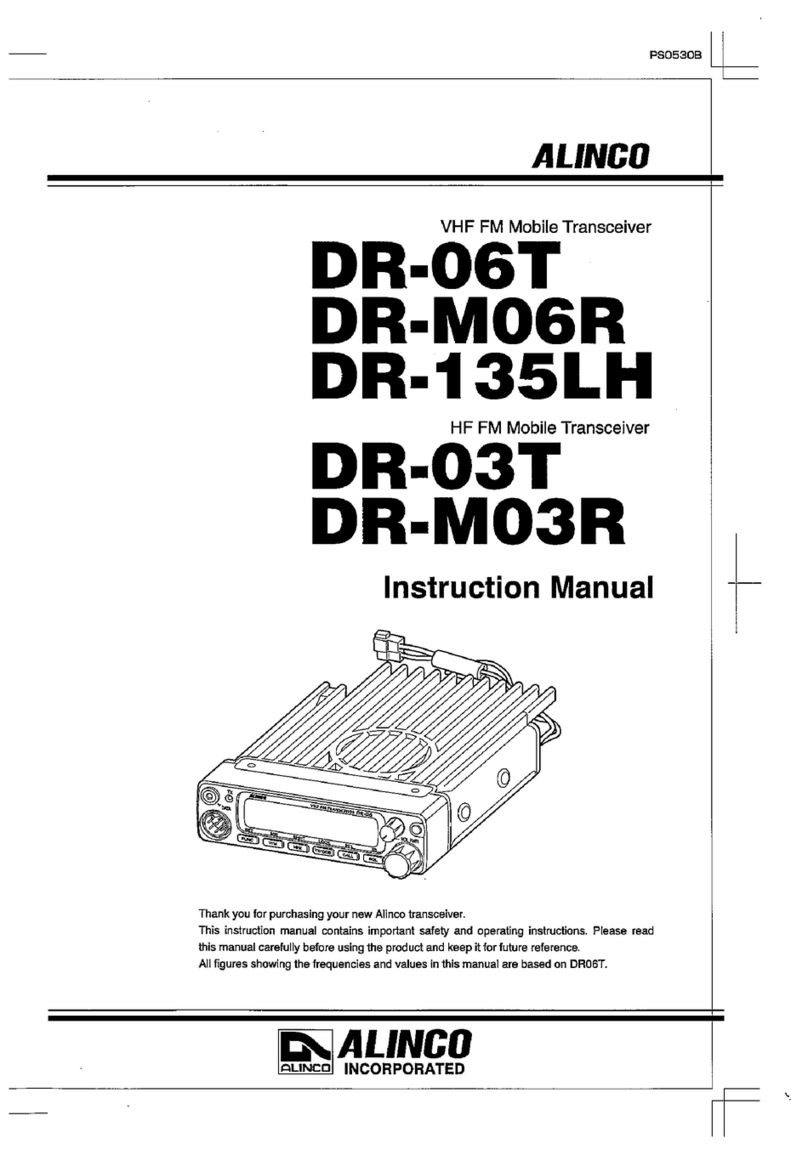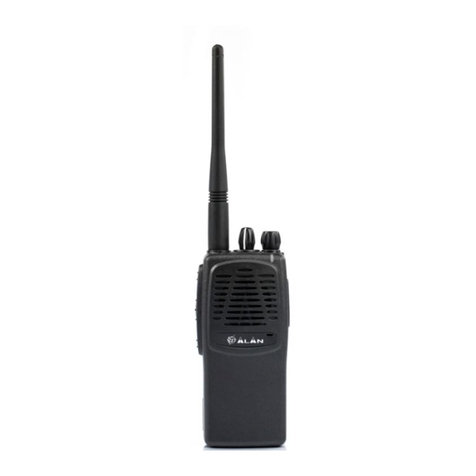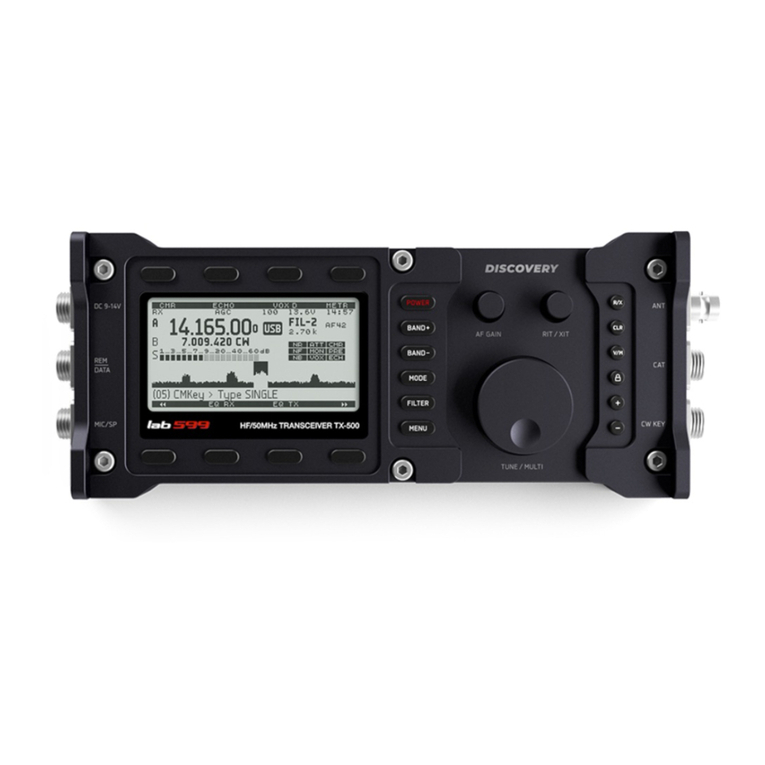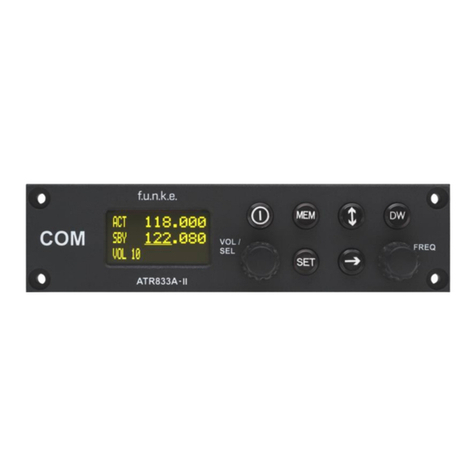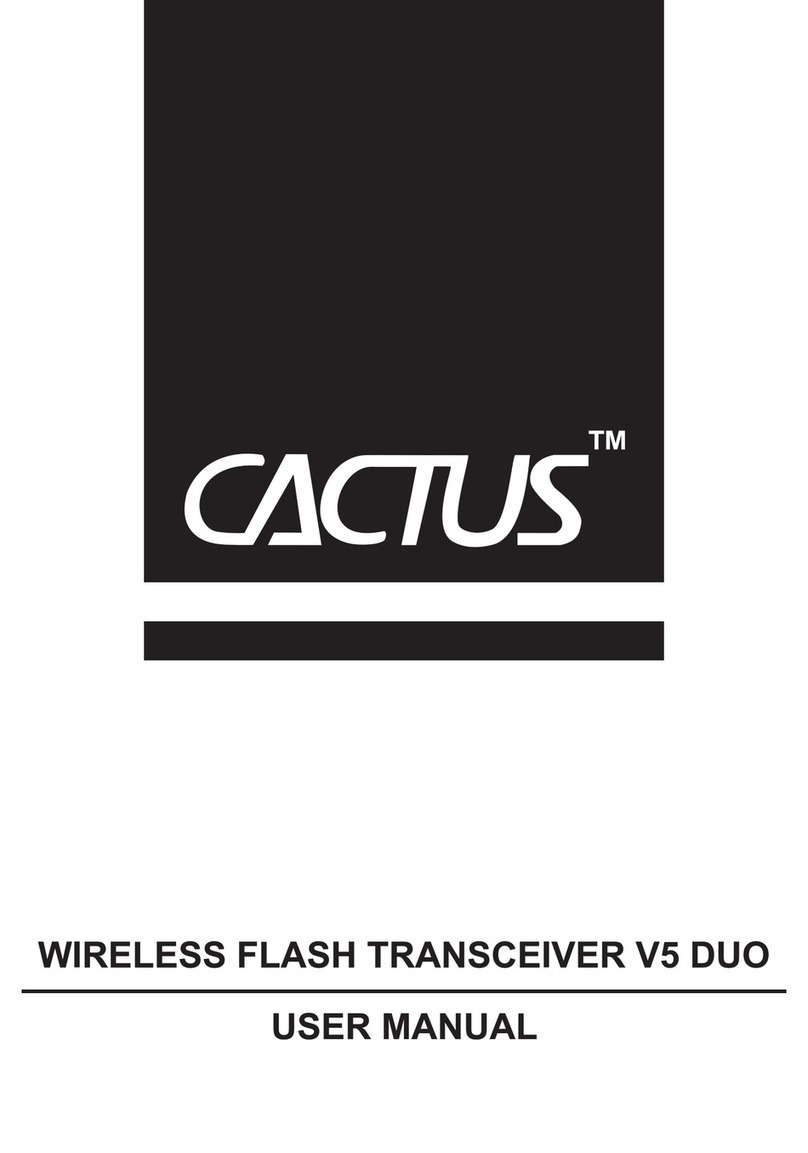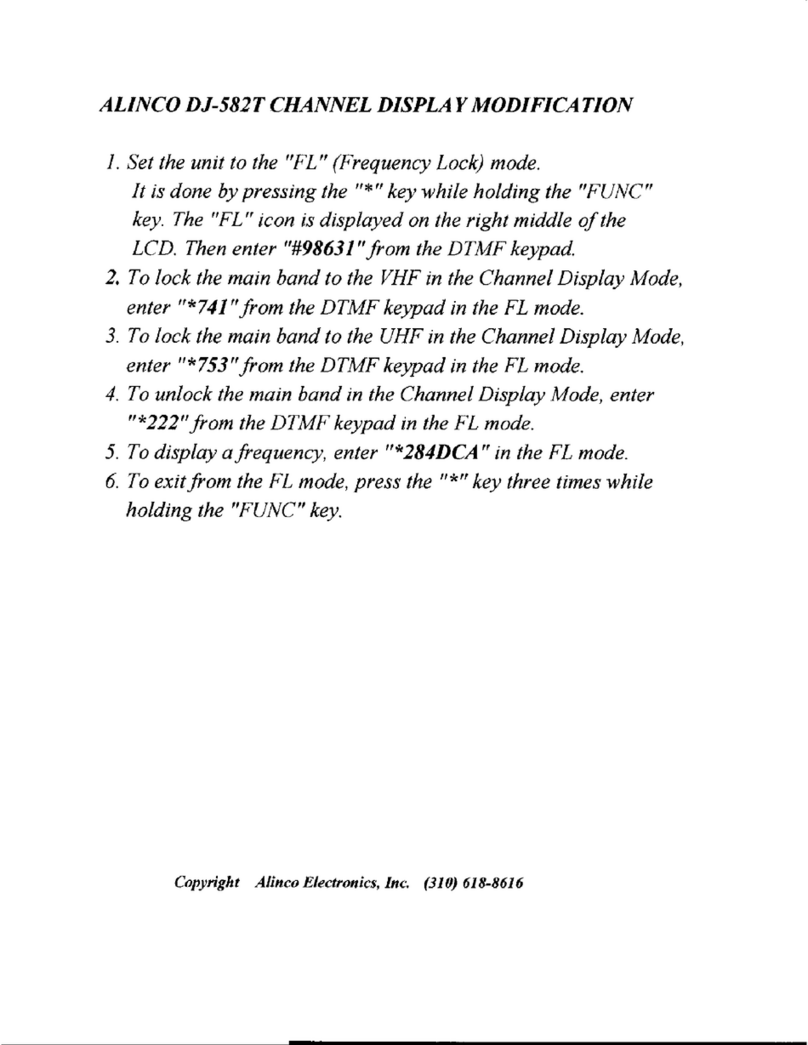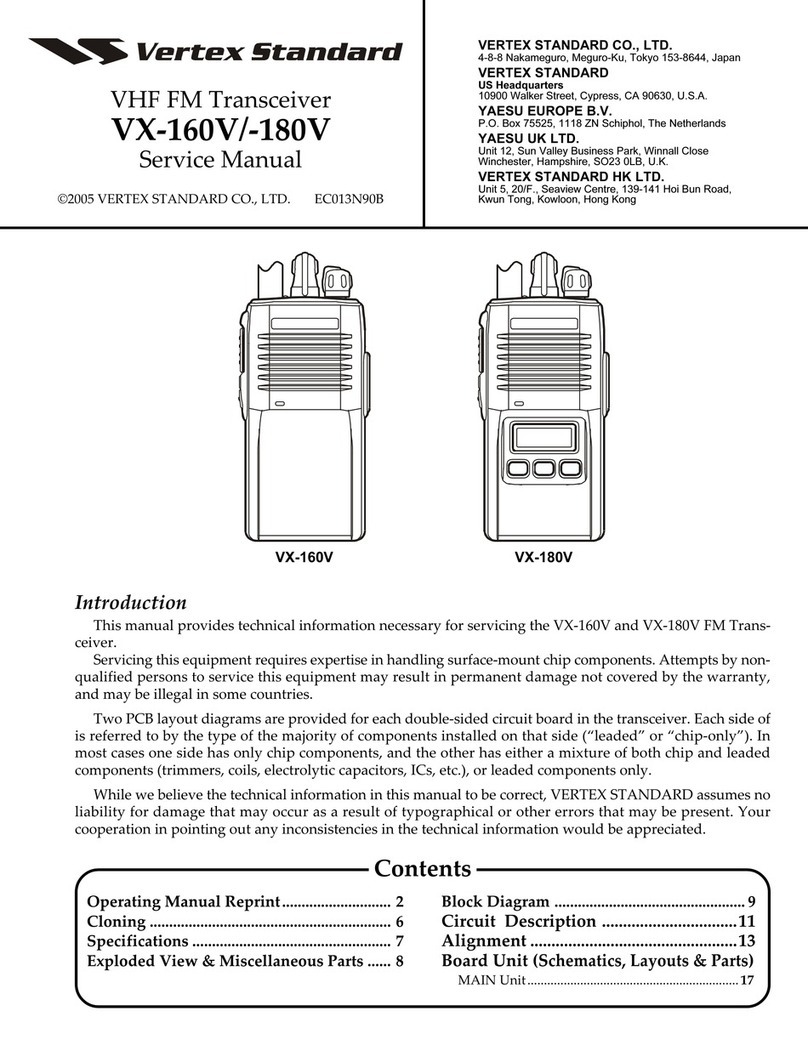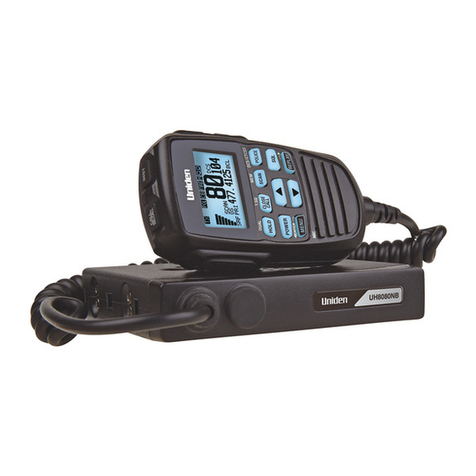Icom IC-M421 User manual

INSTRUCTION MANUAL
New2001
iM421
VHF MARINE TRANSCEIVER
!IC-M421.qxd 04.7.30 6:15 PM Page A (1,1)

i
New2001
FOREWORD
Thank you for purchasing this Icom product. The IC-M421
VHF MARINE TRANSCEIVER
is designed and built with Icom’s
state of the art technology and craftsmanship. With proper
care, this product should provide you with years of trouble-
free operation.
We want to take a couple of moments of your time to thank
you for making the IC-M421 your radio of choice, and hope
you agree with Icom’s philosophy of “technology first.” Many
hours of research and development went into the design of
your IC-M421.
D
FEATURES
❍Built-in DSC meets ITU Class D require-
ment
❍Superior receiver performance
❍Large 2-digit Ch with scrolling channel
comment
❍Rugged waterproof construction
❍Easy to hear speaker
IMPORTANT
READ ALL INSTRUCTIONS carefully and completely
before using the transceiver.
SAVE THIS INSTRUCTION MANUAL — This in-
struction manual contains important operating instructions for
the IC-M421.
EXPLICIT DEFINITIONS
WORD DEFINITION
RWARNING
CAUTION
NOTE
Personal injury, fire hazard or electric shock
may occur.
If disregarded, inconvenience only. No risk
of personal injury, fire or electric shock.
Equipment damage may occur.
Icom, Icom Inc. and the logo are registered trademarks of Icom Incor-
porated (Japan) in the United States, the United Kingdom, Germany, France,
Spain, Russia and/or other countries.
CLEAN THE TRANSCEIVER AND MICROPHONE THOR-
OUGHLY WITH FRESH WATER after exposure to water
including salt water, otherwise, the keys and switches may
become inoperable due to salt crystallization.
!IC-M421.qxd 04.7.30 6:15 PM Page i (1,1)

ii
New2001
IN CASE OF EMERGENCY
If your vessel requires assistance, contact other vessels and
the Coast Guard by sending a distress call on Channel 16.
Or, transmit your distress call using digital selective calling on
Channel 70.
INSTALLATION NOTE
The installation of this equipment should be made in such a
manner as to respect the EC recommended electromagnetic
field exposure limits (1999/519/EC).
The maximum RF power available from this device is 25
watts. The antenna should be installed as high as possible
for maximum efficiency and that this installation height should
be at least 5 meters above ground (or accessible) level. In the
case where an antenna cannot be installed at a reasonable
height, then the transmitter should neither be continuously
operated for long periods if any person is within 5 meters of
the antenna, nor operated at all if any person is touching the
antenna.
In all cases any possible risk depends on the transmitter
being activated for long periods. (actual recommendation lim-
its are specified as an average of 6 minutes) Normally the
transmitter is not active for long periods of time. Some radio li-
censes will require that a timer circuit automatically cuts the
transmitter after 1–2 minutes etc.
Similarly some types of transmitter, SSB, CW, AM, etc. have a
lower ‘average’output power and the perceived risk is even
lower.
USING DIGITAL SELECTIVE CALLING (Ch 70)
DISTRESS CALL PROCEDURE
1. While lifting up the key cover, push and hold
[DISTRESS] for 5 sec. until you hear 5 short beeps
change to one long beep.
2. Wait for an acknowledgment on Channel 70 from a
coast station.
•After the acknowledgment is received, Channel 16 is
automatically selected.
3. Push and hold [PTT], then transmit the appropriate
information as listed above.
USING CHANNEL 16
DISTRESS CALL PROCEDURE
1. “MAYDAY MAYDAY MAYDAY.”
2. “THIS IS ...............”(name of vessel)
3. Your call sign or other indication of the vessel (AND 9-
digit DSC ID if you have one).
4. “LOCATED AT ...............”(your position)
5. The nature of the distress and assistance required.
6. Any other information which might facilitate the rescue.
!IC-M421.qxd 04.7.30 6:15 PM Page ii (1,1)

iii
New2001
DOC
CE versions of the IC-M421 which display the
“CE”symbol on the serial number seal, com-
ply with the essential requirements of the Eu-
ropean Radio and Telecommunication
Terminal Directive 1999/5/EC.
This warning symbol indicates that this equip-
ment operates in non-harmonised frequency
bands and/or may be subject to licensing condi-
tions in the country of use. Be sure to check that
you have the correct version of this radio or the
correct programming of this radio, to comply with
national licensing requirement.
DECLARATION
OF CONFORMITY
We Icom Inc. Japan
1-1-32, Kamiminami, Hirano-ku
Osaka 547-0003, Japan
Kind of equipment:
VHF MARINE TRANSCEIVER
This compliances is based on conformity with the following harmonised
standards, specifications or documents:
i)
EN 301 025-2 V1.2.1 (2004-01)
ii)
EN 301 025-3 V1.2.1 (2004-01)
iii) EN 60945 1997
iv) EN 60950 August 1992, A11 1997
v) EN 300 698-2 V1.1.1 ( 2000-08)
vi) EN 300 698-3 V1.1.1 ( 2001-05)
Type-designation: iM421
Signature
Declare on our sole responsibility that this equipment complies with the
essential requirements of the Radio and Telecommunications Terminal
Equipment Directive, 1999/5/EC, and that any applicable Essential Test
Suite measurements have been performed.
Version (where applicable):
0560
Authorized representative name
Icom (Europe) GmbH
Himmelgeister stra§e 100
D-40225 Dsseldorf
Place and date of issue
Dsseldorf 21th Jul. 2004
!IC-M421.qxd 04.7.30 6:15 PM Page iii (1,1)

iv
New2001
TABLE OF CONTENTS
FOREWORD …………………………………………………………… i
IMPORTANT …………………………………………………………… i
EXPLICIT DEFINITIONS ……………………………………………… i
IN CASE OF EMERGENCY…………………………………………… ii
INSTALLATION NOTE ………………………………………………… ii
DOC …………………………………………………………………… iii
TABLE OF CONTENTS ……………………………………………… iv
PRECAUTION ………………………………………………………… v
1 OPERATING RULES ……………………………………………… 1
2 PANEL DESCRIPTION ………………………………………… 2–5
■Panel description ………………………………………………… 2
■Function display ………………………………………………… 4
■Microphone ……………………………………………………… 5
3 BASIC OPERATION ………………………………………… 6–10
■Channel selection ……………………………………………… 6
■Receiving and transmitting……………………………………… 8
■Call channel programming ……………………………………… 9
■Channel comments …………………………………………… 10
■Microphone lock function ……………………………………… 10
■Display backlighting …………………………………………… 10
4 DUALWATCH/TRI-WATCH ……………………………………… 11
■Description ……………………………………………………… 11
■Operation ……………………………………………………… 11
5 SCAN OPERATION ………………………………………… 12–13
■Scan types ……………………………………………………… 12
■Setting tag channels …………………………………………… 13
■Starting a scan ………………………………………………… 13
6 DSC OPERATION …………………………………………… 14–44
■MMSI code programming……………………………………… 14
■MMSI code check ……………………………………………… 15
■DSC individual ID ……………………………………………… 16
■Position and time programming ……………………………… 20
■Position and time indication…………………………………… 21
■Distress call …………………………………………………… 22
■Transmitting DSC calls ………………………………………… 25
■Receiving DSC calls …………………………………………… 37
■Received messages …………………………………………… 41
■DSC Set mode ………………………………………………… 43
7 SET MODE …………………………………………………… 45–46
■Set mode programming ……………………………………… 45
■Set mode items ………………………………………………… 45
8 CONNECTIONS AND MAINTENANCE …………………… 47–50
■Supplied accessories ………………………………………… 47
■Antenna ………………………………………………………… 47
■Fuse replacement ……………………………………………… 47
■Cleaning ………………………………………………………… 47
■Connections …………………………………………………… 48
■Mounting the transceiver ……………………………………… 49
■Optional MB-69 installation …………………………………… 50
9 TROUBLESHOOTING …………………………………………… 51
10 CHANNEL LIST ……………………………………………… 52–53
11 SPECIFICATIONS AND OPTION ……………………………… 54
■Specifications…………………………………………………… 54
■Option …………………………………………………………… 54
12 TEMPLATE ……………………………………………………… 55
DIMENSIONS ………………………………………………………… 57
!IC-M421.qxd 04.7.30 6:15 PM Page iv (1,1)

v
New2001
RWARNING! NEVER connect the transceiver to an AC
outlet. This may pose a fire hazard or result in an electric
shock.
NEVER connect the transceiver to a power source of more
than 16 V DC or use reverse polarity. This will ruin the trans-
ceiver.
NEVER cut the DC power cable between the DC plug and
fuse holder. If an incorrect connection is made after cutting,
the transceiver may be damaged.
NEVER place the transceiver where normal operation of the
vessel may be hindered or where it could cause bodily injury.
KEEP the transceiver at least 1 m away from the ship’s nav-
igation compass.
DO NOT use or place the transceiver in areas with temper-
atures below –20°C or above +60°C or in areas subject to di-
rect sunlight, such as the dashboard.
AVOID the use of chemical agents such as benzine or al-
cohol when cleaning, as they may damage the transceiver
surfaces.
BE CAREFUL! The transceiver rear panel will become
hot when operating continuously for long periods.
Place the transceiver in a secure place to avoid inadvertent
use by children.
BE CAREFUL! The transceiver, HM-150 employs water-
proof construction, which corresponds to JIS waterproof spec-
ification, Grade 7 (1 m/30 min.). However, once the trans-
ceiver or microphone has been dropped, waterproofing
cannot be guaranteed due to the fact that the case may be
cracked, or the waterproof seal damaged, etc.
PRECAUTION
!IC-M421.qxd 04.7.30 6:15 PM Page v (1,1)

1
1
OPERATING RULES
1
DDPRIORITIES
•Read all rules and regulations pertaining to priorities and
keep an up-to-date copy handy. Safety and distress calls
take priority over all others.
•You must monitor Channel 16 when you are not operating
on another channel.
•False or fraudulent distress signals are prohibited and pun-
ishable by law.
DDPRIVACY
•Information overheard but not intended for you cannot law-
fully be used in any way.
•Indecent or profane language is prohibited.
DDRADIO LICENSES
(1) SHIP STATION LICENSE
You must have a current radio station license before using the
transceiver. It is unlawful to operate a ship station which is not
licensed.
Inquire through your dealer or the appropriate government
agency for a Ship-Radiotelephone license application. This
government-issued license states the call sign which is your
craft’s identification for radio purposes.
(2) OPERATOR’S LICENSE
A Restricted Radiotelephone Operator Permit is the license
most often held by small vessel radio operators when a radio
is not required for safety purposes.
The Restricted Radiotelephone Operator Permit must be
posted or kept with the operator. Only a licensed radio opera-
tor may operate a transceiver.
However, non-licensed individuals may talk over a transceiver
if a licensed operator starts, supervises, ends the call and
makes the necessary log entries.
Keep a copy of the current government rules and regulations
handy.
!IC-M421.qxd 04.7.30 6:15 PM Page 1 (1,1)

2
PANEL DESCRIPTION
New2001
2
■Panel description
Function
display (p. 4)Speaker qi!0o
weuytr
qPOWER/VOLUME CONTROL [VOL] (p. 8)
➥Rotate to turn the transceiver power ON or OFF.
➥Rotate to adjust the audio level.
wSQUELCH CONTROL [SQL] (p. 8)
Rotate to set the squelch threshold level.
eDISTRESS KEY [DISTRESS] (p. 22)
Transmits a distress call when pushed for 5 sec.
rENTER KEY [ENT]
Sets the DSC menu, a channel comment, etc. when
pushed.
tCLEAR KEY [CLR]
Cancels the entered function and exits the condition when
pushed.
!IC-M421.qxd 04.7.30 6:15 PM Page 2 (1,1)

3
2
PANEL DESCRIPTION
New2001
2
ySCAN/TAG CHANNEL KEY [SCAN•TAG] (p. 13)
➥Push to start and stop the normal or priority scan when
tag channels are programmed.
➥Push for 1 sec. to set the displayed channel as a tag
(scanned) channel.
➥While pushing [HI/LO] located on the microphone, push
for 3 sec. to clear or set all tag channels in the selected
channel group.
uCHANNEL UP/DOWN KEYS [▲]/[▼]•[U/I]
➥Selects the operating channels, Set mode settings, etc.
when pushed. (pgs. 6, 45)
➥Selects one of two channel groups in sequence when
both keys are pushed. (p. 7)
•International and U.S.A.* channels are available.
(*U.K. version only)
➥While pushing [SCAN•TAG], push to adjust the bright-
ness of the LCD and key backlight. (p. 10)
iCHANNEL 16/CALL CHANNEL KEY [16•C]
➥Selects Channel 16 when pushed. (p. 6)
➥Selects call channel when pushed for 1 sec. (p. 6)
➥Push for 3 sec. to enter the call channel programming
condition when the call channel is selected. (p. 9)
➥While pushing [CH•DUAL], push to enter the channel
comment programming condition. (p. 10)
➥While turning power ON, push to enter set mode. (p. 45)
oCHANNEL/DUALWATCH/TRI-WATCH KEY [CH•DUAL]
➥Push to select the regular channel. (pgs. 6, 7)
➥Push for 1 sec. to start dualwatch or tri-watch. (p. 11)
➥Push to stop dualwatch or tri-watch when either is acti-
vated. (p. 11)
!0 DSC MENU KEY [MENU] (p. 14)
Toggles the DSC menu ON or OFF when pushed.
!IC-M421.qxd 04.7.30 6:15 PM Page 3 (1,1)

4
2PANEL DESCRIPTION
New2001
■Function display
qCHANNEL NUMBER READOUT
Indicates the selected operating channel number.
•“A”appears when a simplex channel is selected. (p. 7)
wPOWER INDICATOR (p. 8)
➥“25W”appears when high power is selected.
➥“1W”appears when low power is selected.
eBUSY/TRANSMIT INDICATOR (p. 8)
➥“BUSY”appears when receiving a signal or when the
squelch opens.
➥“TX”appears while transmitting.
rDUPLEX INDICATOR (p. 7)
Appears when a duplex channel is selected.
•Duplex channel has a different transmit frequency and receiving
frequency.
tCHANNEL GROUP INDICATOR (p. 7)
Indicates whether an International “INT”or U.S.A. “USA”
channel is selected. (depends on version)
yTAG CHANNEL INDICATOR (p. 13)
Appears when a tag channel is selected.
uSCAN INDICATOR
➥Either “NORMAL SCAN”or “PRI-SCAN 16”scan
type appears while scanning. (p. 13)
➥“DUAL 16”appears during dualwatch; “TRI 16”ap-
pears during tri-watch. (p. 11)
iPOSITION INDICATOR
➥Shows the GPS position data.
•“??”may blink every 2 sec. instead of position data; when the
GPS position data is invalid. In such a case, the last position
data is held for up to 23.5 hours.
•“??”may blink every 2 sec. instead of position data 4 hours
after the position data is input manually, up until 23.5 hours
have past.
•A beep sounds automatically for 1 min. every 4 hours when
the GPS or manually input position data has not been up-
dated.
➥“No Position”appears when no GPS receiver is
connected and no position data is input manually.
BUSY-INT----
25W-DUP-TAG-
NORMAL-SCAN-
23 3 .15 N-
135 3 .351E-
-CALLING UTC-12:00-
qw y
u
e
i
o
!1 !0
tr
!IC-M421.qxd 04.7.30 6:15 PM Page 4 (1,1)

5
2
PANEL DESCRIPTION
New2001
2
oTIME ZONE INDICATOR
➥Shows the current time data when a GPS receiver is
connected.
➥“No Time”appears when no GPS receiver is con-
nected and no time data is input manually.
➥“Local”appears when the offset time data is set.
(p. 43)
!0 LOW BATTERY INDICATOR
“”blinks when the battery voltage drops to approx. 11 V
DC or below.
!1 CHANNEL COMMENT INDICATOR
Channel comment appears if programmed. (p. 10)
•More than 9-character comment scrolls automatically.
■Microphone
qPTT SWITCH [PTT]
Push and hold to transmit; release to receive. (p. 8)
wCHANNEL UP/DOWN KEYS [JJ]/[KK]
Push either key to change the operating memory channel,
set mode settings, etc. (pgs. 6, 45)
eTRANSMIT POWER KEY [HI/LO]
➥Toggles power high and lower when pushed. (p. 8)
•Some channels are set to low power only.
➥While pushing [HI/LO], turn power ON to toggle the mi-
crophone lock function ON and OFF. (p. 10)
Microphone
w
q
e
!IC-M421.qxd 04.7.30 6:15 PM Page 5 (1,1)

6
BASIC OPERATION
New2001
3
■Channel selection
DDChannel 16
Channel 16 is the distress and safety channel. It is used for
establishing initial contact with another station and for emer-
gency communications. Channel 16 is monitored during both
dualwatch and tri-watch. While standing by, you must monitor
Channel 16.
➥Push [16•C] momentarily to select Channel 16.
➥Push [CH•DUAL] to return to the condition before selecting
Channel 16, or push [▲]or [▼]to select operating chan-
nel.
DDCall channel
Each regular channel group has a separate leisure-use call
channel. The call channel is monitored during tri-watch. The
call channels can be programmed (p. 9) and are used to store
your most often used channels in each channel group for
quick recall.
➥Push [16•C] for 1 sec. to select the call channel of the se-
lected channel group.
•The call channel number appears.
•Each channel group may have an independent call channel after
programming a call channel.
➥Push [CH•DUAL] to return to the condition before selecting
the call channel, or push [▲]or [▼]to select an operating
channel.
Push
for 1 sec.
-INT----
25W--TAG-
-
23 3 .15 N-
135 3 .351E-
CALLING -UTC-12:00-
Push
-INT----
25W--TAG-
-
23 3 .15 N-
135 3 .351E-
CALLING -UTC-12:00-
!IC-M421.qxd 04.7.30 6:15 PM Page 6 (1,1)

7
3
BASIC OPERATION
New2001
3
DDInternational channels and U.S.A. channels*
The IC-M421 is pre-programmed with 57 International (INT)
channels in addition to 59 U.S.A. channels*. These channel
groups may be specified for the operating area.
qPush [CH•DUAL] to select a regular channel.
wPush both [▲]and [▼]on the transceiver to change the
channel group, if necessary.
•International and U.S.A.* channels can be selected in sequence.
ePush [▲]or [▼]to select a channel.
•“DUP”appears for duplex channels.
•“A”appears when a simplex channel is selected.
*U.K. version only
Push both
and
U.S.A. channel*
International channel
-INT----
25W-DUP-TAG-
-
23 3 .15 N-
135 3 .351E-
TELEPHON-UTC-12:00-
-USA----
25W--TAG-
-
23 3 .15 N-
135 3 .351E-
-CCG -UTC-12:00-
Scrolls
!IC-M421.qxd 04.7.30 6:15 PM Page 7 (1,1)

8
3BASIC OPERATION
New2001
■Receiving and transmitting
CAUTION: Transmitting without an antenna may damage
the transceiver.
qRotate [VOL] to turn power ON.
wSet the audio and squelch levels.
➥Rotate [SQL] fully counterclockwise in advance.
➥Rotate [VOL] to adjust the audio output level.
➥Rotate [SQL] clockwise until the noise disappears.
eTo change the channel group, push both [▲]and [▼]on
the transceiver. (p. 7)
rPush [▲]or [▼]to select the desired channel. (pgs. 6, 7)
•When receiving a signal, “BUSY”appears and audio is emitted
from the speaker.
•Further adjustment of [VOL] may be necessary at this point.
tPush [HI/LO] on the microphone to select the output
power if necessary.
•“25W”or “1W”appears when high or low power is selected, re-
spectively.
•Choose low power for short range communications, and choose
high power for longer distance communications.
•Some channels are for low power only.
yPush and hold [PTT] to transmit, then speak into the mi-
crophone (M).
•“TX”appears.
•Channel 70 cannot be used for transmission other than DSC.
uRelease [PTT] to receive.
IMPORTANT: To maximize the readability of your trans-
mitted signal, pause a few sec. after pushing [PTT], hold
the microphone (M) 5 to 10 cm from your mouth and speak
at a normal voice level.
✔NOTE for TOT (Time-out Timer) function
The TOT function inhibits continuous transmission over a pre-
set time period after the transmission starts.
A beep sounds 10 sec. before the TOT function activates, to
indicate the transmission will be shut down and “TOT”ap-
pears on the channel comment indicator. Transmission is not
possible for 10 sec. after this transmission shut down.
u
w
re
M
qy
rt
M: Microphone
!IC-M421.qxd 04.7.30 6:15 PM Page 8 (1,1)

9
3
BASIC OPERATION
New2001
3
■Call channel programming
You can program the call channel with your most often-used
channel in each channel group for quick recall.
qPush both [▲]and [▼]
on the transceiver to se-
lect the desired channel
group (International and
U.S.A.*) to be pro-
grammed.
*U.K. version only
wPush [16•C] for 1 sec.
to select the call chan-
nel of the selected
channel group.
•The call channel number
appears.
ePush [16•C] again for
3 sec. (until a long beep
changes to 2 short
beeps) to enter the call
channel programming
condition.
•Channel number and
“CALL WRITE”start
blinking.
rPush [▲]or [▼]to se-
lect the desired chan-
nel.
tPush [16•C] to program
the displayed channel
as the call channel.
•Push [CH•DUAL] to can-
cel.
•The channel number and
“CALL WRITE”stop
blinking.
-INT----
25W-DUP-TAG-
-
23 3 .15 N-
135 3 .351E-
-INTL -UTC-12:00-
-INT----
25W--TAG-
CALL WRITE -
23 3 .15 N-
135 3 .351E-
-INTL -UTC-12:00-
CALL WRITE
-INT----
25W--TAG-
-
23 3 .15 N-
135 3 .351E-
CALLING -UTC-12:00-
-INT----
25W--TAG-
CALL WRITE -
23 3 .15 N-
135 3 .351E-
CALLING -UTC-12:00-
CALL WRITE
-INT----
25W-DUP-TAG-
-
23 3 .15 N-
135 3 .351E-
INTL -UTC-12:00-
!IC-M421.qxd 04.7.30 6:15 PM Page 9 (1,1)

10
3BASIC OPERATION
New2001
■Channel comments
Memory channels can be labelled with alphanumeric com-
ments of up to 10 characters each for easy channel recogni-
tion.
More than 9 characters comment scrolls automatically at the
channel comment indicator after the channel selection.
Capital letters, small letters, numerals, some symbols (- . /)
and space can be used.
qSelect the desired memory channel.
•Cancel dualwatch, tri-watch or scan in advance.
wWhile pushing [CH•DUAL], push [16•C] to edit the channel
comment.
•A cursor and the first character start blinking alternately.
eSelect the desired character by pushing [▲]or [▼].
•Push [CH•DUAL] or [16•C] to move the cursor forward or back-
ward, respectively.
rRepeat step eto input all characters.
tPush [ENT] to set the comment.
•Push [CLR] to cancel.
•The cursor disappears.
yRepeat steps qto tto program other channel com-
ments, if desired.
■Microphone lock function
The microphone lock function electrically locks [Y]/[Z]and
[HI/LO] keys on the supplied microphone. This prevents ac-
cidental channel changes and function access.
➥While pushing [HI/LO] on the microphone, turn power ON
to toggle the lock function ON and OFF.
■Display backlighting
The function display and keys can be backlit for better visibil-
ity under low light conditions.
➥While pushing [SCAN•TAG], push [Y]or [Z]to adjust the
brightness of the LCD and key backlight.
•The backlight is selectable in 3 levels and OFF.
[HI/LO]
[J]/[K]
!IC-M421.qxd 04.7.30 6:15 PM Page 10 (1,1)

11
4
DUALWATCH/TRI-WATCH
3
4
■Description
Dualwatch monitors Channel 16 while you are receiving an-
other channel; tri-watch monitors Channel 16 and the call
channel while receiving another channel.
■Operation
qSelect Dualwatch or Tri-watch in set mode. (p. 46)
wPush [▲]or [▼]to select the desired operating channel.
ePush [CH•DUAL] for 1 sec. to start Dualwatch or Tri-watch.
•“DUAL 16”appears during dualwatch; “TRI 16”appears dur-
ing tri-watch.
•A beep tone sounds when a signal is received on Channel 16.
rTo cancel Dualwatch or Tri-watch, push [CH•DUAL] again.
[Example]: Operating tri-watch on INT channel 25.
BUSY-INT----
25W-DUP-TAG-
TRI 16 -
23 3 .15 N-
135 3 .351E-
TELEPHON-UTC-12:00-
BUSY-INT----
25W--TAG-
TRI 16 -
23 3 .15 N-
135 3 .351E-
INTL -UTC-12:00-
-INT----
25W-DUP-TAG-
TRI 16 -
23 3 .15 N-
135 3 .351E-
TELEPHON-UTC-12:00-
-INT----
25W-DUP-TAG-
TRI 16 -
23 3 .15 N-
135 3 .351E-
TELEPHON-UTC-12:00-
Tri-watch starts.
Signal is received on call
channel.
Signal is received on
Channel 16 takes priority.
Tri-watch resumes after
the signal disappears.
DUALWATCH/TRI-WATCH SIMULATION
•If a signal is received on Channel 16, dualwatch/tri-watch
pauses on Channel 16 until the signal disappears.
•If a signal is received on the call channel during tri-watch,
tri-watch becomes dualwatch until the signal disappears.
•To transmit on the selected channel during dualwatch/tri-
watch, push and hold [PTT].
Call channel
Dualwatch Tri-watch
!IC-M421.qxd 04.7.30 6:15 PM Page 11 (1,1)

12
SCAN OPERATION
New2001
5
■Scan types
Scanning is an efficient way to locate signals quickly over a
wide frequency range. The transceiver has priority scan and
normal scan.
Set the tag channels (scanned channel) before scanning.
Clear the tag channels which inconveniently stop scanning,
such as those for digital communication use. (Refer to right
page for details.)
Choose priority or normal scan in set mode. (p. 45)
NORMAL SCAN
Normal scan, like priority scan, searches through all tag
channels in sequence. However, unlike priority scan, Chan-
nel 16 is not checked unless Channel 16 is set as a tag
channel.
CH 01 CH 02
CH 06
CH 05 CH 04
CH 03
PRIORITY SCAN
Priority scan searches through all tag channels in se-
quence while monitoring Channel 16. When a signal is de-
tected on Channel 16, scan pauses until the signal disap-
pears; when a signal is detected on a channel other than
Channel 16, scan becomes dualwatch until the signal dis-
appears.
CH 06
CH 01
CH 16
CH 02
CH 05 CH 04
CH 03
!IC-M421.qxd 04.7.30 6:15 PM Page 12 (1,1)

13
5
SCAN OPERATION
New2001
5
■Setting tag channels
For more efficient scanning, add the desired channels as tag
channels or clear the tag for unwanted channels.
Channels are not tagged will be skipped during scanning. Tag
channels can be assigned to each channel group (Interna-
tional and U.S.A.*) independently.
qPush both [▲]and [▼]to select the desired channel group
(International and U.S.A.*).
wSelect the desired channel to be set as a tag channel.
ePush [SCAN•TAG] for 1 sec. to set the displayed channel
as a tag channel.
•“TAG”appears in the display.
rTo cancel the tag channel setting, repeat step e.
•“TAG”disappears.
✔Clearing (or setting) all tagged channels
While pushing [HI/LO] on the microphone, push [SCAN•TAG]
for 3 sec. (until a long beep changes to 2 short beeps) to clear
all tag channels in the channel group.
•Repeat above procedure to set all tag channels.
■Starting a scan
Set scan type (priority or normal scan) and scan resume timer
in advance using set mode. (p. 45)
qPush [▲]and [▼]to select the desired channel group (In-
ternational and U.S.A.*) if desired.
wSet tag channels as described at left.
eMake sure the squelch is closed to start a scan.
r
Push [SCAN•TAG] to start priority or normal scan.
•“PRI-SCAN 16”or “NORMAL SCAN”appears in the function
display.
•When a signal is detected, scan pauses until the signal disap-
pears or resumes after pausing 5 sec. according to set mode
setting. (Channel 16 is still monitored during priority scan.)
•Push [▲]or [▼]to check the scanning tag channels, to change
the scanning direction or resume the scan manually.
•A beep tone sounds and “16”blinks when a signal is received
on Channel 16 during priority scan.
tTo stop the scan, push
[SCAN•TAG]
.
*U.K. version only
[Example]: Starting a normal scan.
-INT----
25W-DUP-TAG-
-
23 3 .15 N-
135 3 .351E-
-INTL -UTC-12:00-
-INT----
25W-DUP-TAG-
NORMAL SCAN-
23 3 .15 N-
135 3 .351E-
--UTC-12:00-
BUSY-INT----
25W-DUP-TAG-
NORMAL SCAN-
23 3 .15 N-
135 3 .351E-
-INTL -UTC-12:00-
Push
Scan starts. When a signal is received.
!IC-M421.qxd 04.7.30 6:15 PM Page 13 (1,1)

14
DSC OPERATION
New2001
6
■MMSI code programming
The 9-digit MMSI (Maritime Mobile Service Identity: DSC self
ID) code can be programmed at power ON.
This code programming can be performed only once.
qTurn power OFF.
wWhile pushing [MENU], turn power ON to enter MMSI
code programming condition.
eAfter the display appears, release [MENU].
rPush [MENU] again to enter the DSC menu.
tPush [▲]or [▼]to select “Set up,”push [ENT].
yPush [▲]or [▼]
to select “MMSI Check,”push
[ENT]
.
uPush [▲]or [▼]
to set
the specific 9-digit MMSI code.
•Push [CH•DUAL] or [16•C] to move the cursor forward or back-
ward, respectively.
•Push [SCAN•TAG] to clear the MMSI code.
•Push [CLR] to cancel and exit the condition to the set up menu.
iAfter input the 9-digit code, push [ENT] to set the code.
•Returns to the set up menu.
oPush [CLR] or [▼]to select “Exit,”push [ENT].
•Returns to the DSC menu.
•Repeat again to return to the normal operation condition.
--DSC Menu--
MMSI Check
Input 9 digits
_________
<CLR˘Exit / ENT˘OK>
--DSC Menu--
Set up
DEL:INDV ID ≤
DEL:Group ID
Offset Time
˘MMSI Check ≥
--DSC Menu--
Select Item
Position Input
Received Calls
˘Set up
Exit
!IC-M421.qxd 04.7.30 6:15 PM Page 14 (1,1)
Other manuals for IC-M421
1
Table of contents
Other Icom Transceiver manuals

Icom
Icom IC-280 User manual
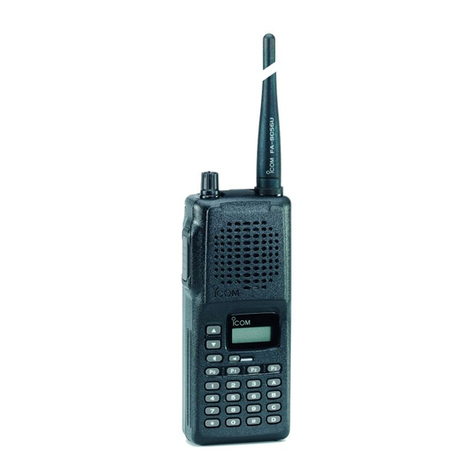
Icom
Icom IC-F3S User manual
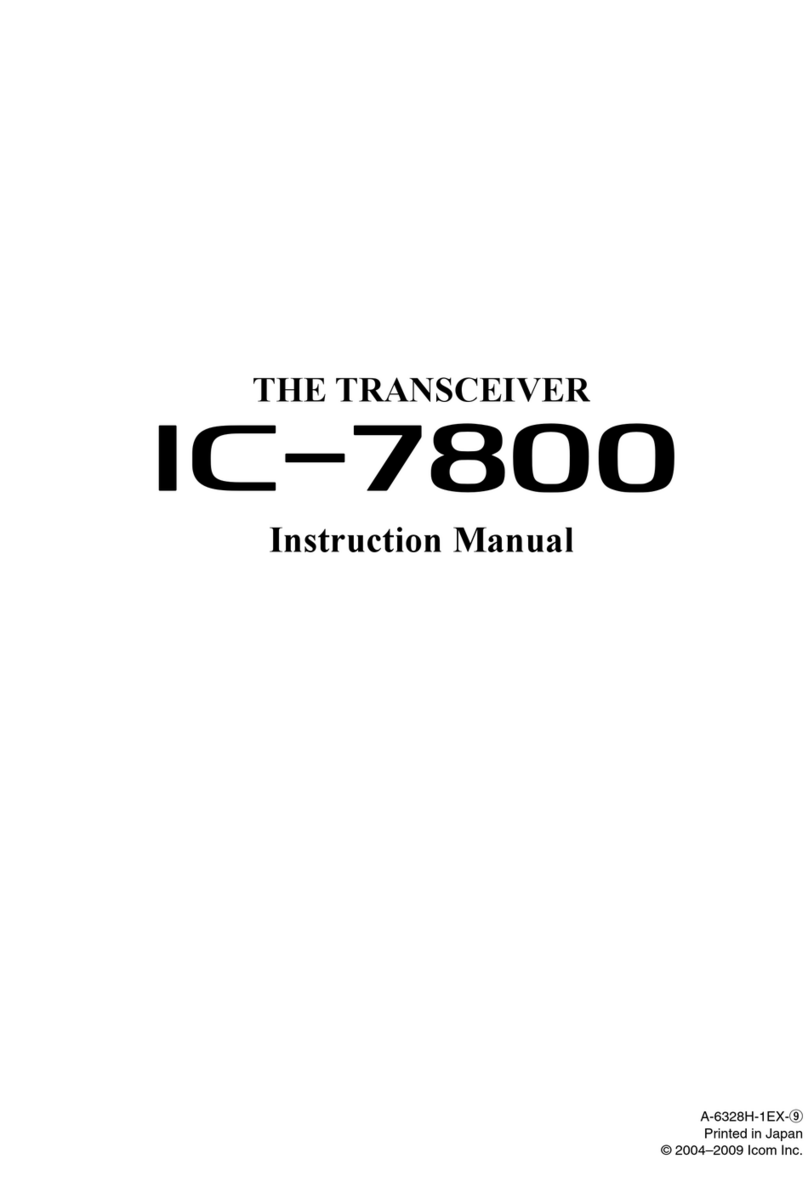
Icom
Icom IC-7800 User manual
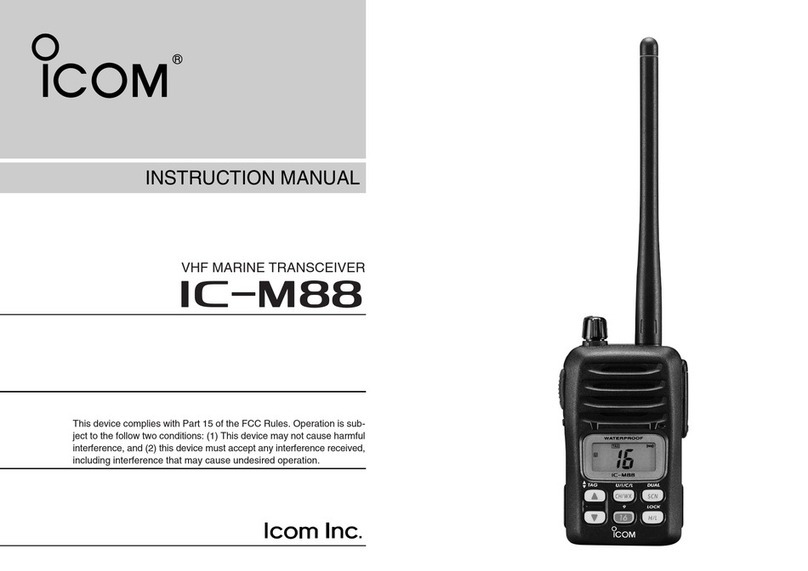
Icom
Icom IC-M88 User manual

Icom
Icom IC-4A User manual
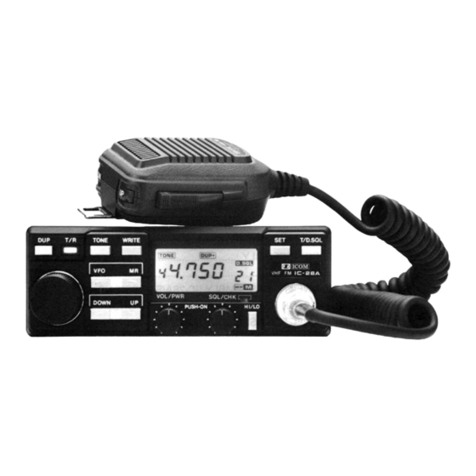
Icom
Icom IC-28A User manual
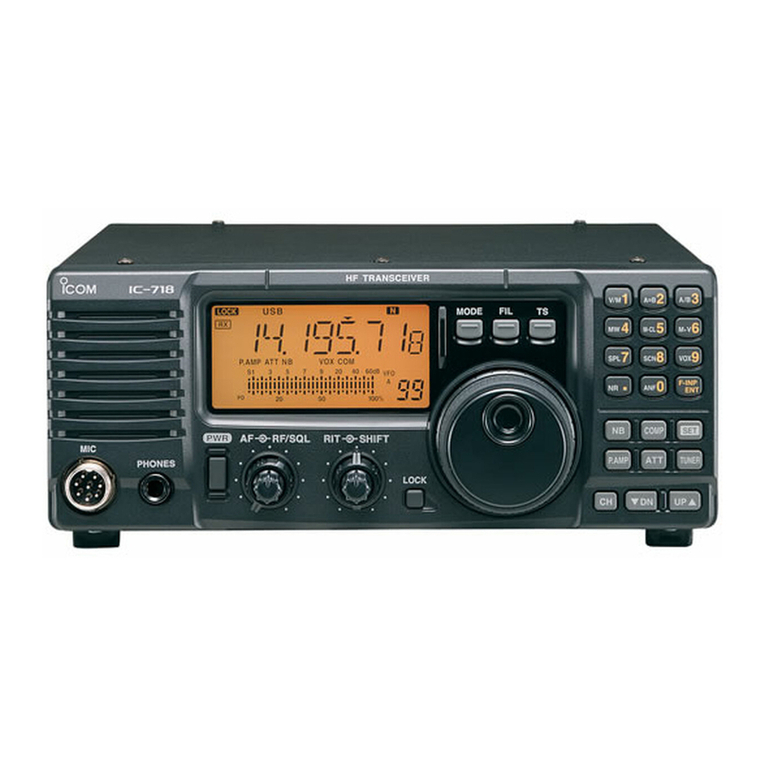
Icom
Icom IC-718 Installation and operating instructions
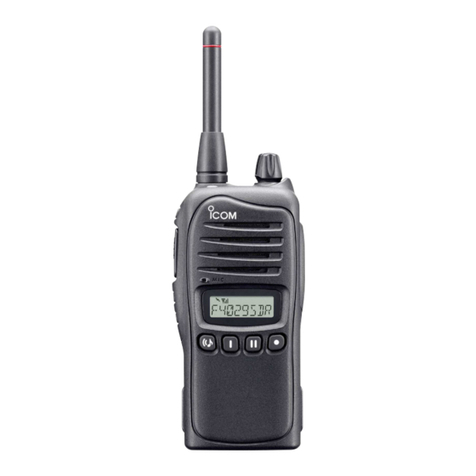
Icom
Icom IC-F4029SDR User manual
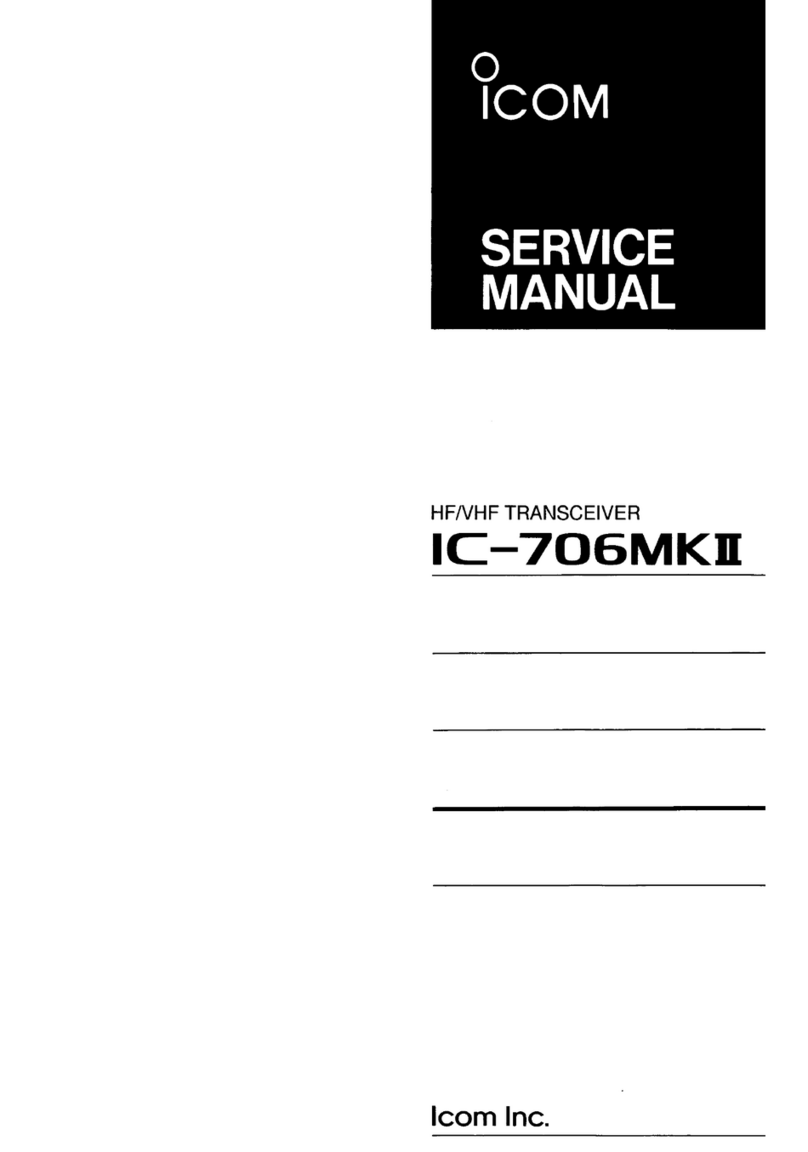
Icom
Icom IC-706MKII User manual
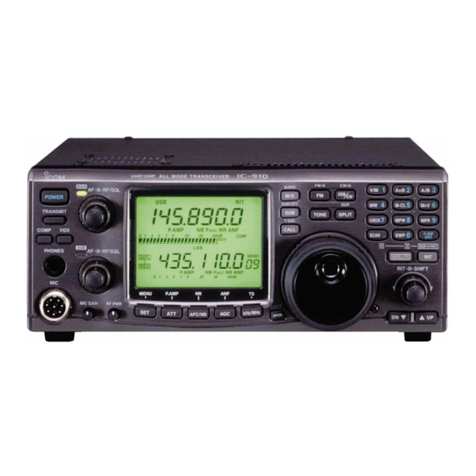
Icom
Icom IC-910H User manual
Popular Transceiver manuals by other brands
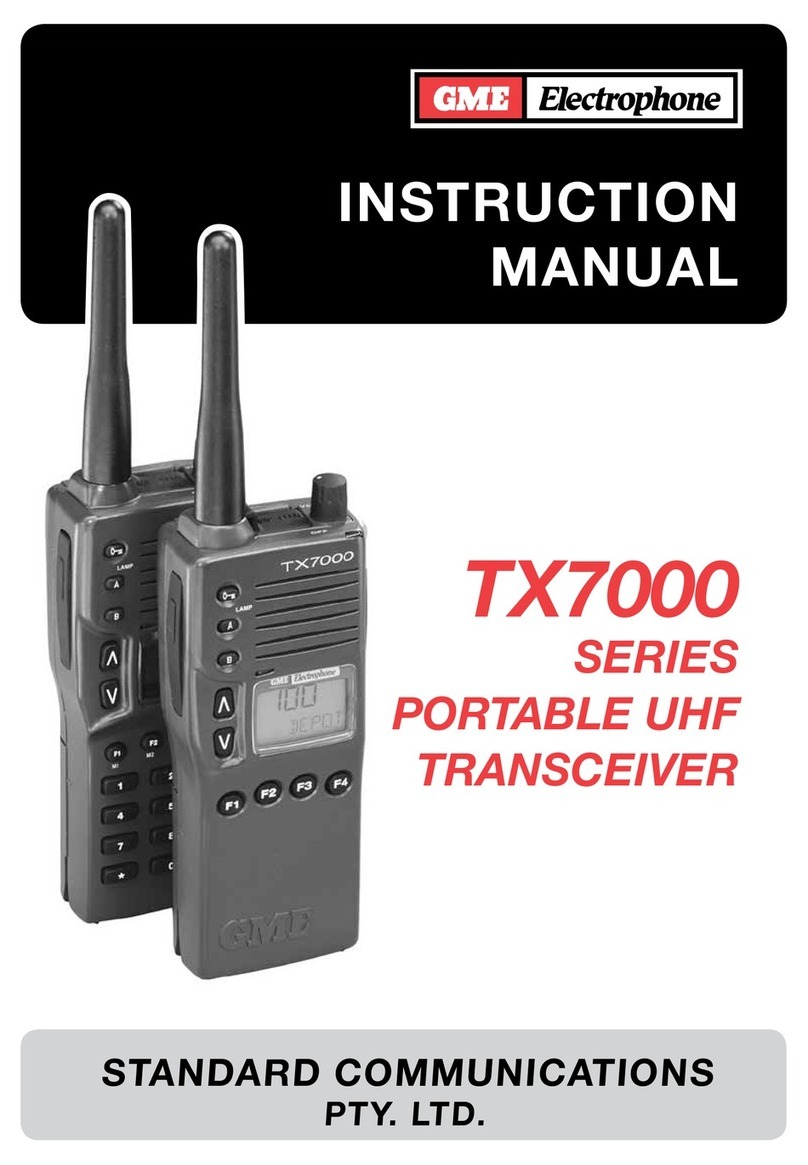
GME Electrophone
GME Electrophone TX7000 SERIES instruction manual
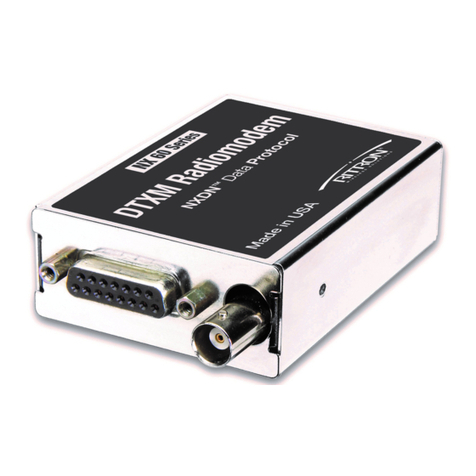
Ritron
Ritron DTXM-NXDN Series Maintenance & Operating Manual
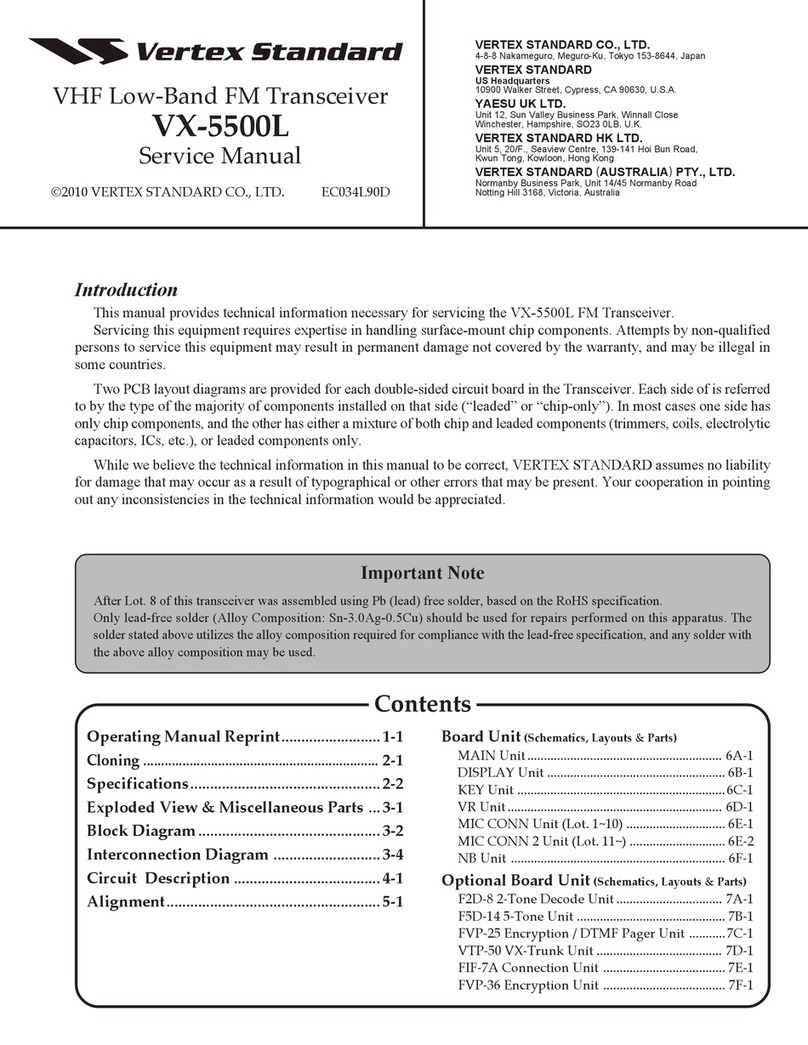
Vertex Standard
Vertex Standard VX-5500L Service manual
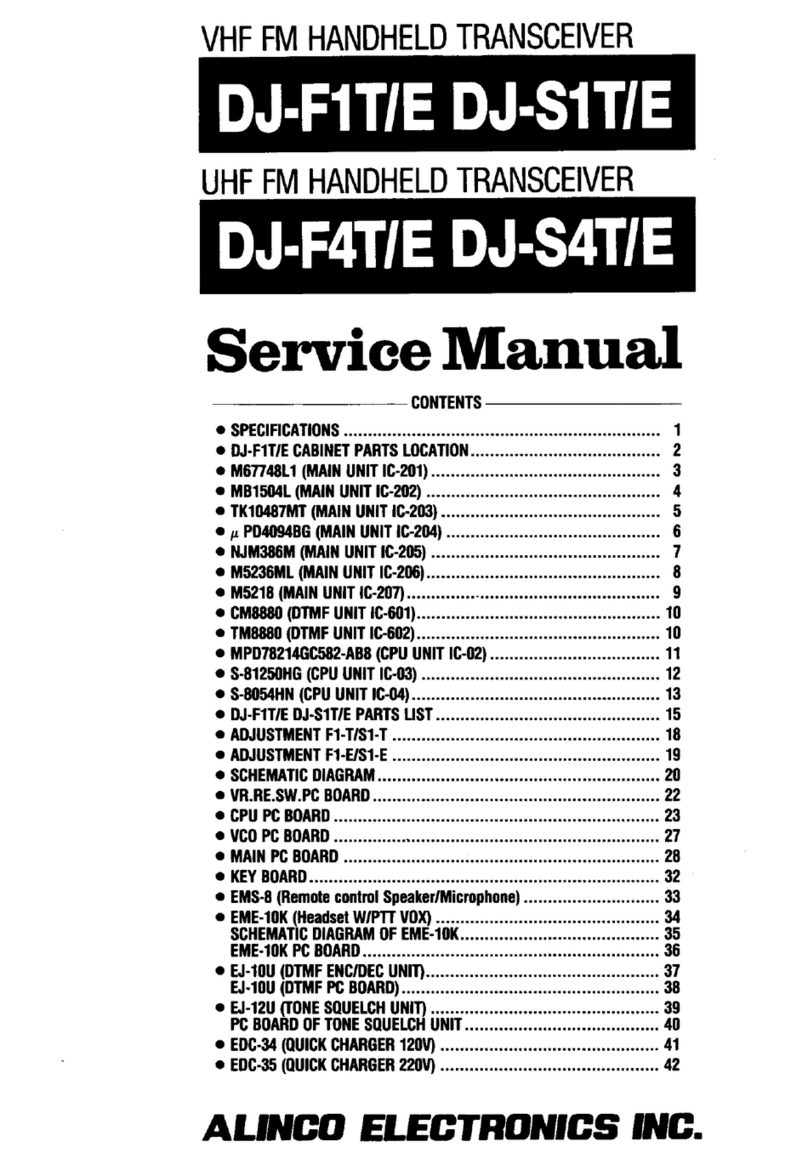
Alinco
Alinco DJ-F1T Service manual
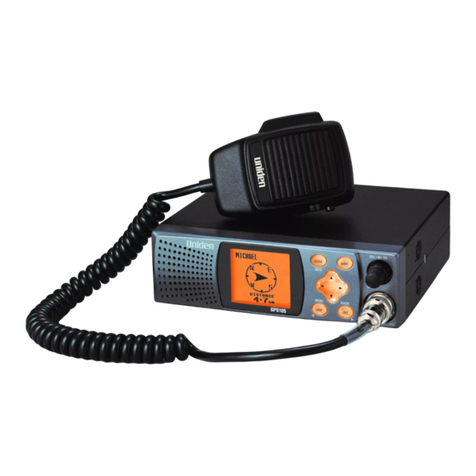
Uniden
Uniden GPS105 Operation manual

BWI Eagle
BWI Eagle AIR-EAGLE SR PLUS 36-4000-DC Product information bulletin

